Northeastern’s COVID-19 testing facility collected 1,300 samples on its first day

There was a hum in the air at the Cabot Physical Education Center. It wasn’t just the whir of new ventilation tubes pumping air out of the gym-turned-coronavirus testing center—although there was certainly that. It was the hum of anticipation for hundreds of people as they experienced for the first time the new normal on Northeastern’s Boston campus.
Monday marked the first day of large-scale COVID-19 testing on campus, and the beginning of the facility’s “spin-up” period, during which staff will smooth out any rough edges of the testing operation before undergraduate students return on Aug. 29.
“It’s good to be back; it’s been a long break,” said Shiva Khiyani, a graduate student studying industrial engineering. He was back on campus for the first time since it closed in mid-March, and had just completed his test for the virus.
“The whole thing was really smooth,” Khivani said.
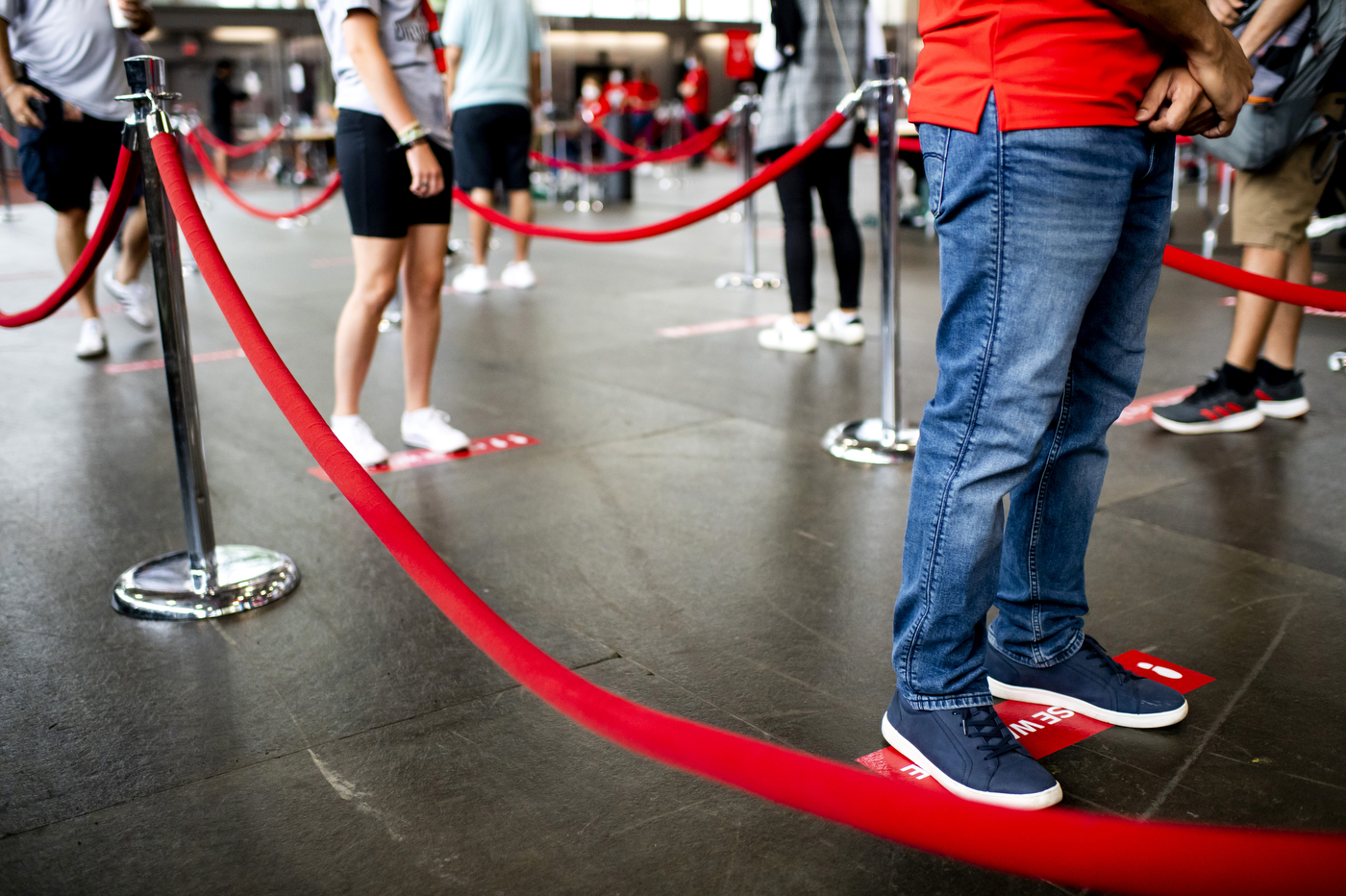

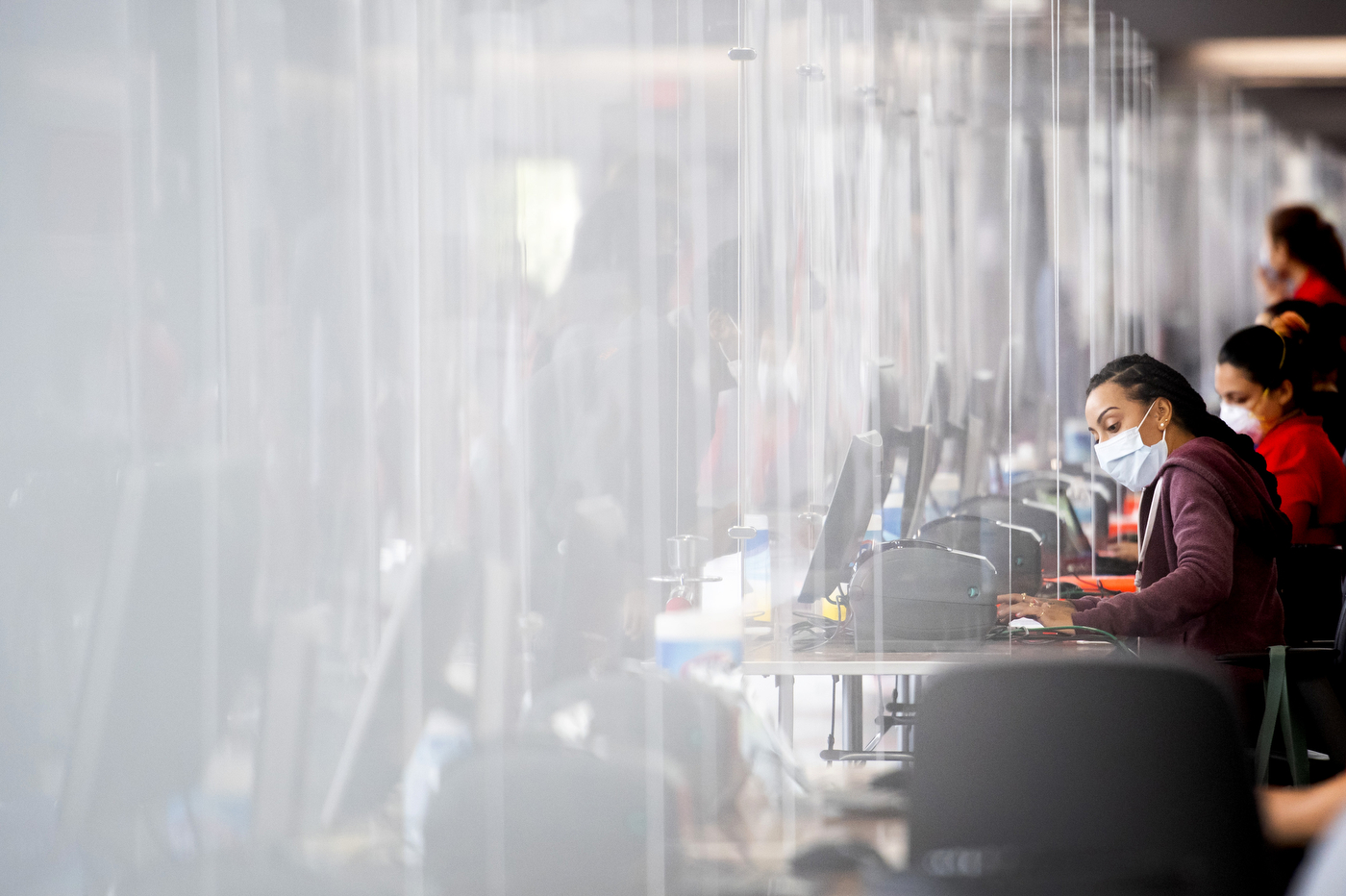
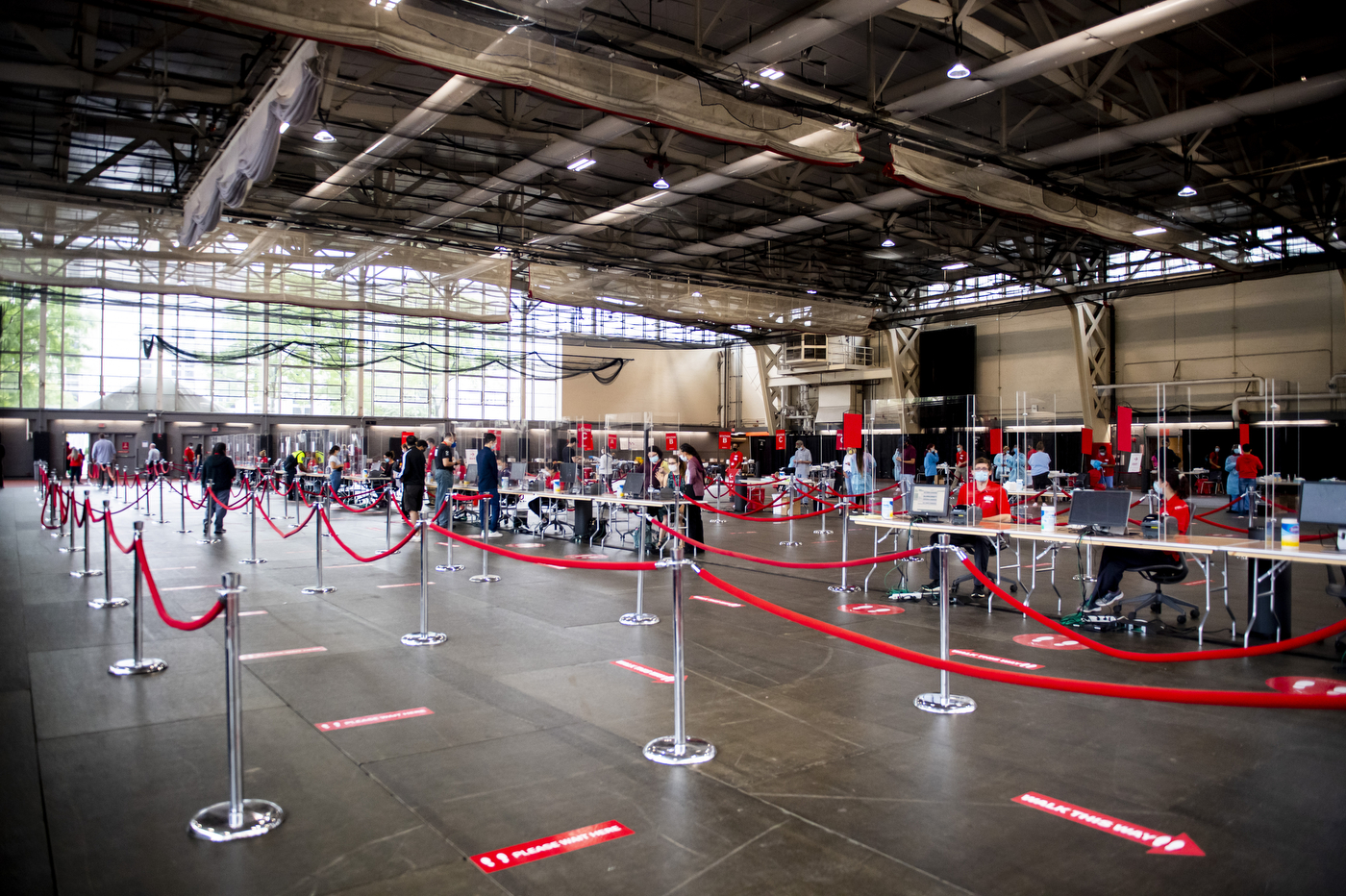
The testing regimen at Cabot is crucial to the reopening of campus this month. Over the next two weeks, all members of the Northeastern community who are currently working or studying on campus will be required to take COVID-19 tests to ensure they are healthy.
Roughly 1,300 people had scheduled a test on Monday, said David Luzzi, senior vice provost for research and vice president of Northeastern’s Innovation Campus, and head of the university’s testing operation.
“It’s going well so far; this week is a learning process,” Luzzi said. The testing process took more than 30 minutes for the first few people who came early Monday morning.
By the time Khivani took his test around 10 a.m., however, the line was moving smoothly.
“The queue was fine, and the whole process took about five minutes,” he said.

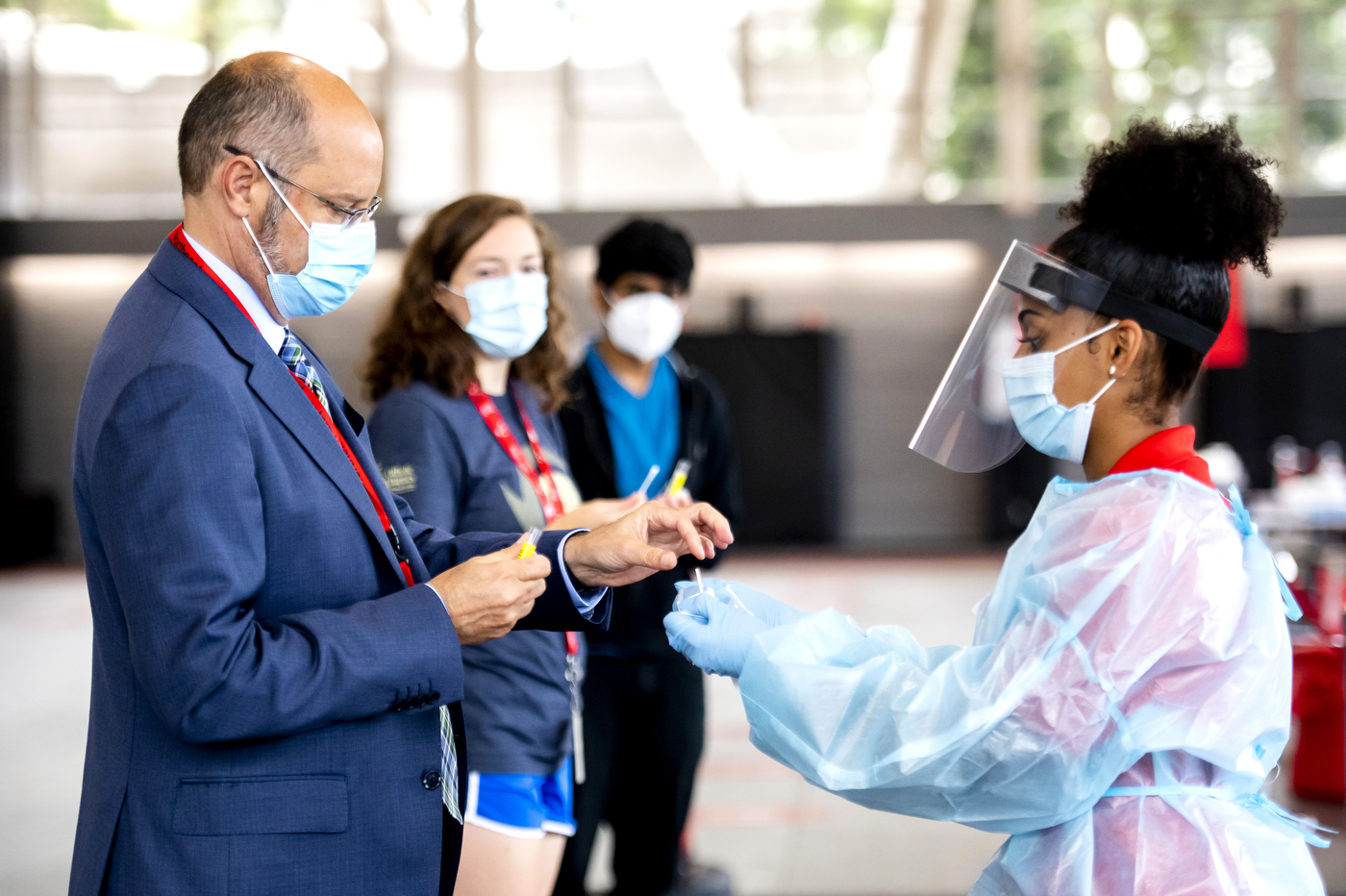
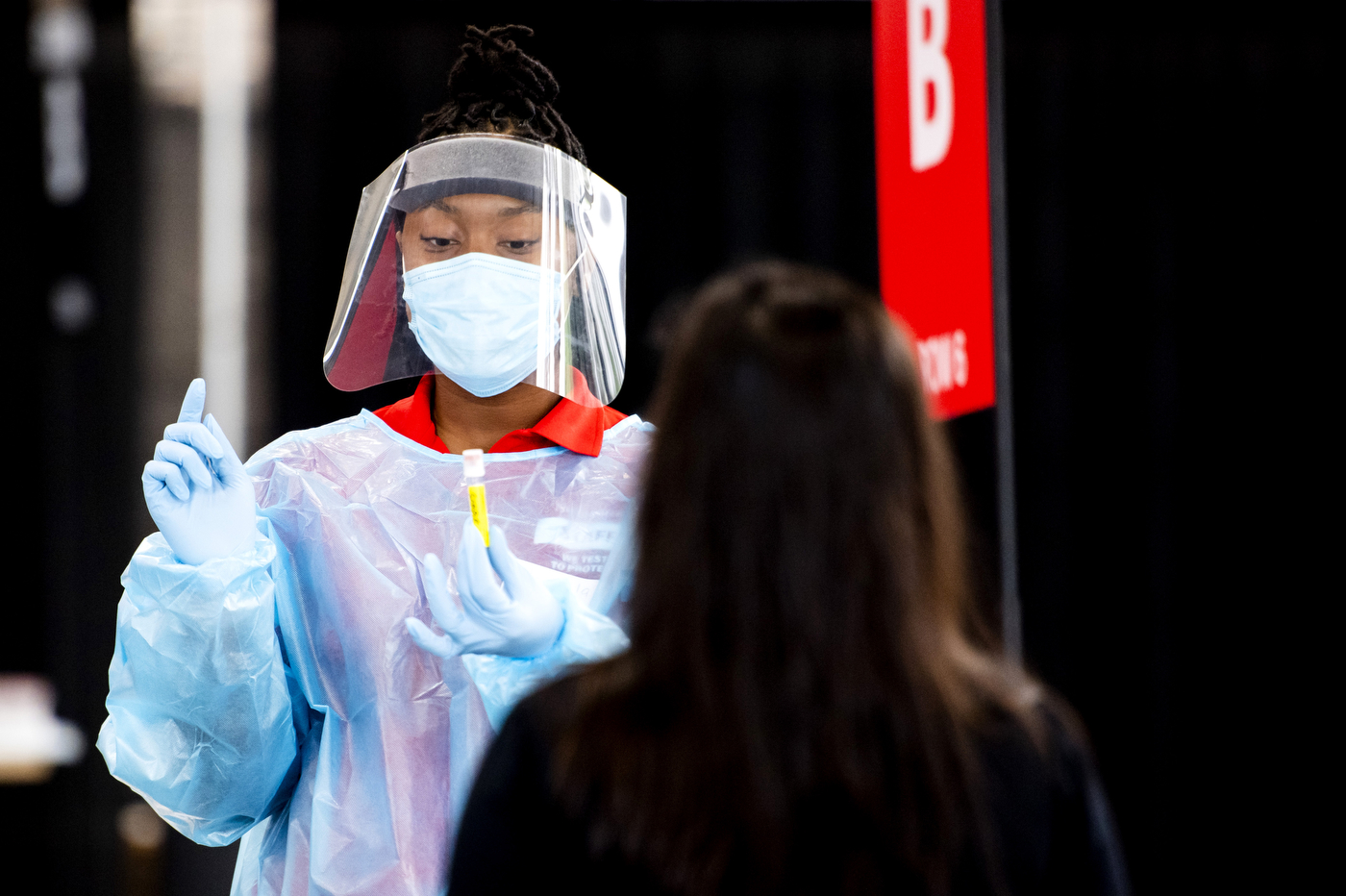
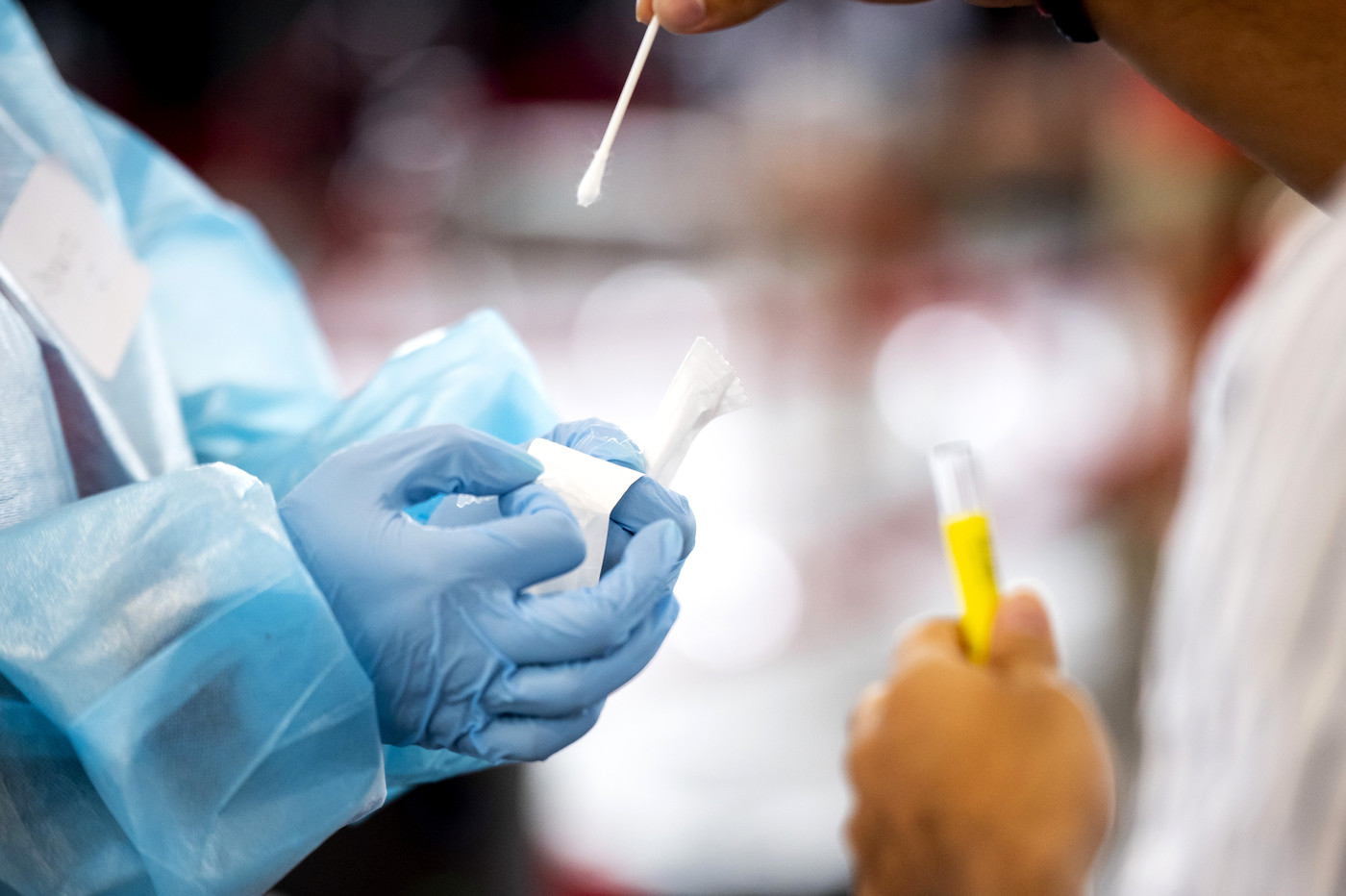
Vasilissa Paushkin, a fourth-year student studying cell and molecular biology, had a similar experience. “The test itself was easy,” she said.She added that she had run into the early delays that Luzzi noted.
“The goal is to get people in and out in 10 minutes or less,” Luzzi said. And, as students, faculty, and staff get used to the process, it may move even more quickly, he said.
“We’re trying to maximize two things here: safety and joy,” Luzzi said. “Safety means getting tested. Joy means spending as little time as possible doing it.”
When the fall semester begins in earnest, faculty and staff will be tested every seven days, or whenever they are on campus if their visits are less frequent than one day a week. Students will be tested the day they arrive, then on day three, followed by day five—and will be able to attend classes in person and take part in other university activities after receiving negative results on all three tests. After that, students will be tested once every five days.
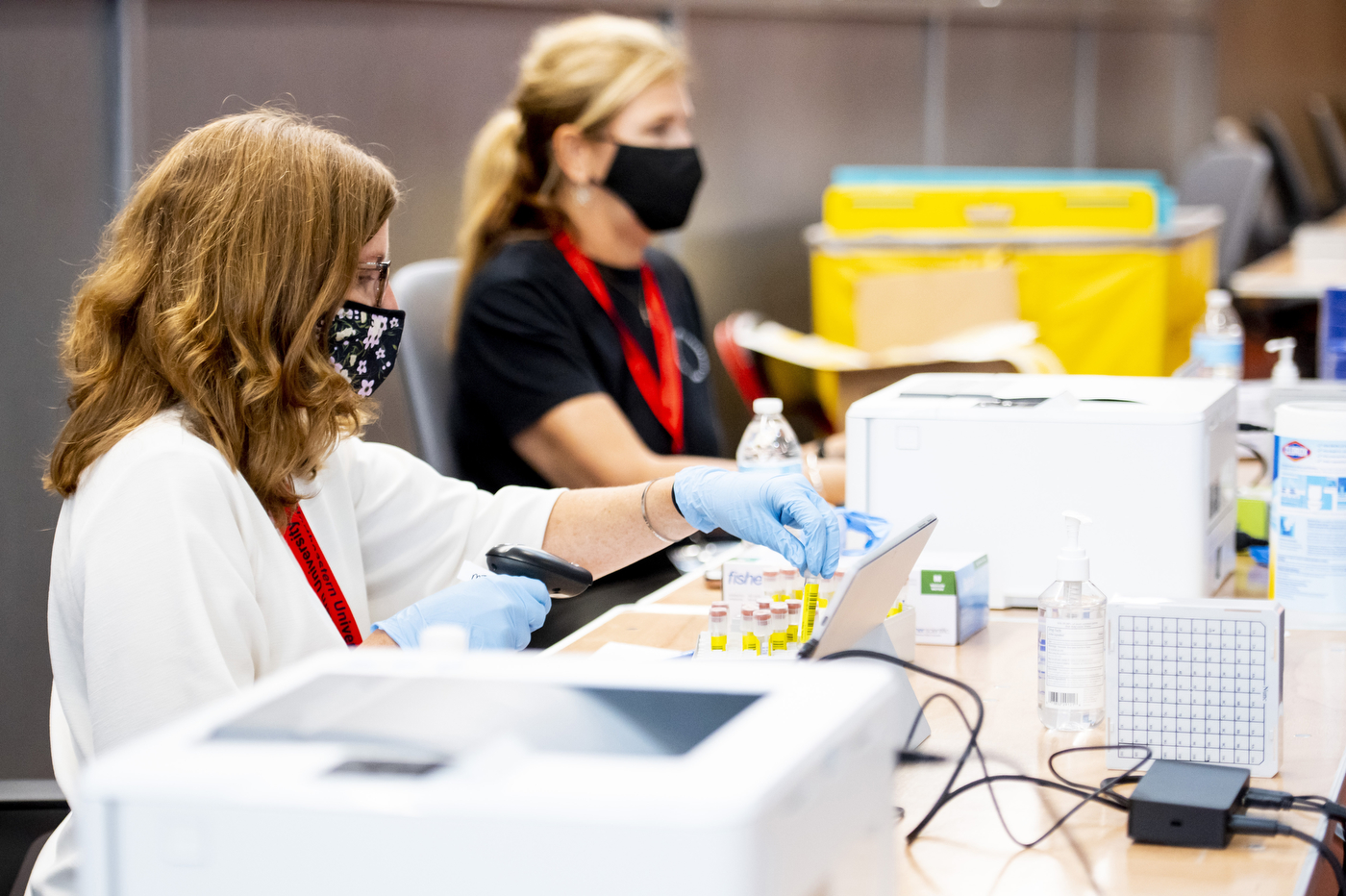
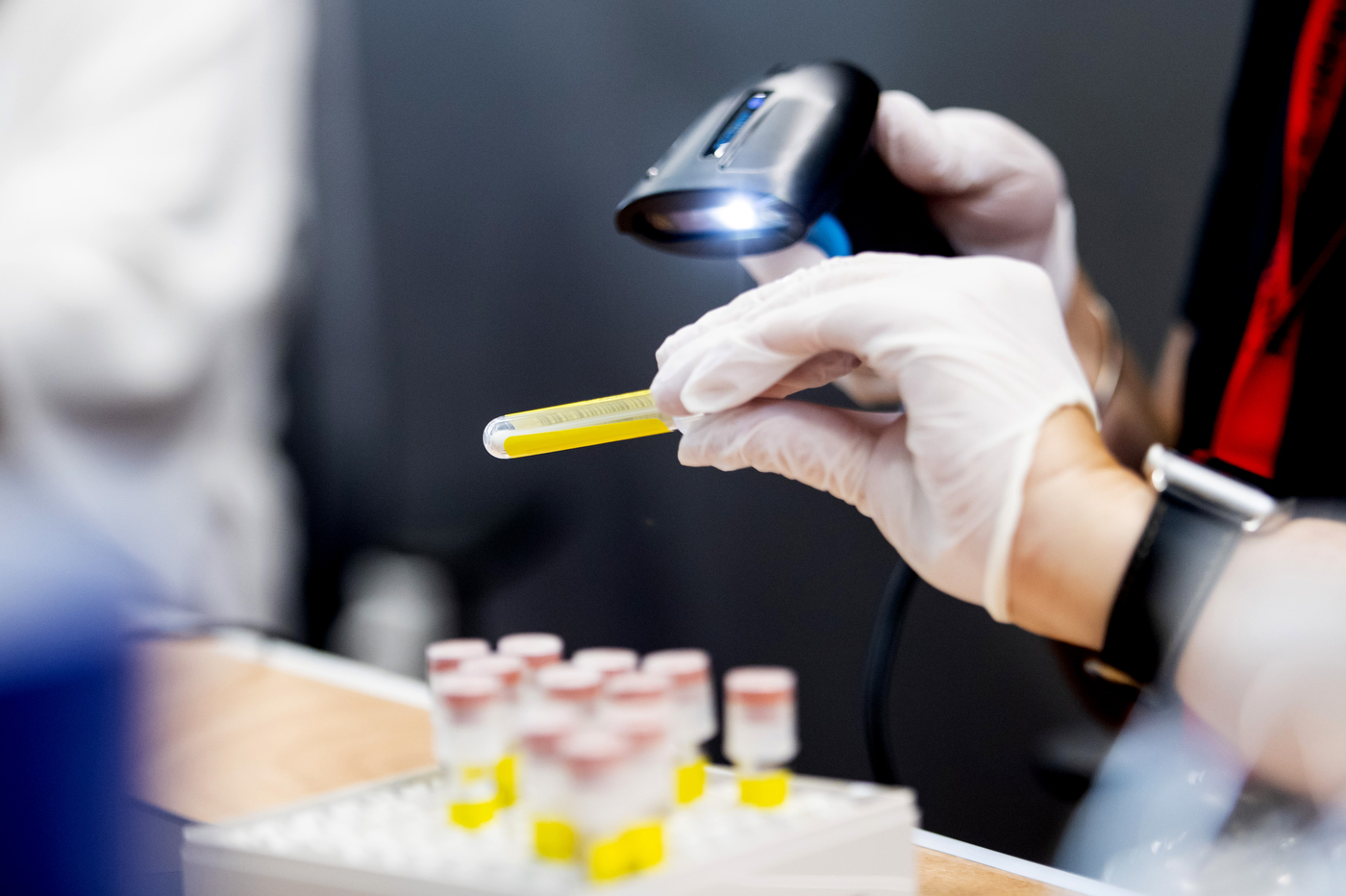
All appointments must be arranged via the COVID-19 Test Scheduler; no walk-ups are allowed. Tests are available on weekdays between 7 a.m. and 7 p.m., with abbreviated hours on weekends. Until late August, students and faculty will be responsible for manually scheduling their test appointments. Soon, though, the scheduler will automatically send notifications to students’ Microsoft Outlook 365 calendar to remind them to make an appointment on Days 3 and 5.
What was remarkable was how quiet it was inside Cabot—the voices of students, faculty, and staff working their way through the testing process were hushed as they listened carefully to instructions from staff directing them through the three-step process.
First, a greeter in the tent asked if each person being tested had made an appointment online and whether they’d gotten the green light from their daily symptom self-assessment. People showed their Northeastern ID, and had their temperatures taken with an infrared thermometer. Only then were people allowed to enter the facility for testing.
Next, each person was greeted by a receptionist seated at a computer behind a plexiglass shield who asked for their Northeastern ID number and date of birth. Each person being tested was handed a small barcoded sticker and sent onto the final phase of the operation.
Finally, each person was directed to the first available testing station. There were 16 of them, and each station can accommodate up to three appropriately distanced test-takers.
A healthcare professional at each testing station guided test-takers through the actual testing process. People were instructed to swab the inside of their own nose for 10 seconds in each nostril. Each person then placed their Q-tip swab inside a vial with their unique bar-coded sticker on it, and put the vial into a box that was sent to Northeastern’s Life Sciences Testing Center at its campus in Burlington, Massachusetts.
The samples are shuttled from Boston to Burlington by a medical courier company roughly every two hours, said Jared Auclair, an associate teaching professor of biotechnology and lead of the testing center, a state-of-the-art laboratory built to support the university’s testing protocols.
Once the samples arrive at the testing center, staff scan the individual barcodes on each vial, then pass the samples to the diagnostic lab. There, scientists test for viral matter. If the sample is negative for the coronavirus, the lab releases the result to the patient by email.
If the sample is positive or inconclusive, the results are sent to a medical doctor on staff, who will call the patient to provide them with the result as well as information on next steps. The process is designed to take no more than 24 hours.
“So far, it’s been a good learning experience for everyone, which is what this week is supposed to be,” Auclair said on Monday afternoon. The lab had received and begun testing two sets of samples by 2 p.m., he said.
Overall, Mary Belliveau, a registered nurse and site supervisor at Cabot on Monday, was pleased with how things were running, she said.
“Everyone here is doing a phenomenal job. The only issue we’ve had is when people accidentally drop their [specimen] vial. And that’s not a catastrophe at all,” she said.
In that case, people simply started the process anew.
For media inquiries, please contact media@northeastern.edu.





